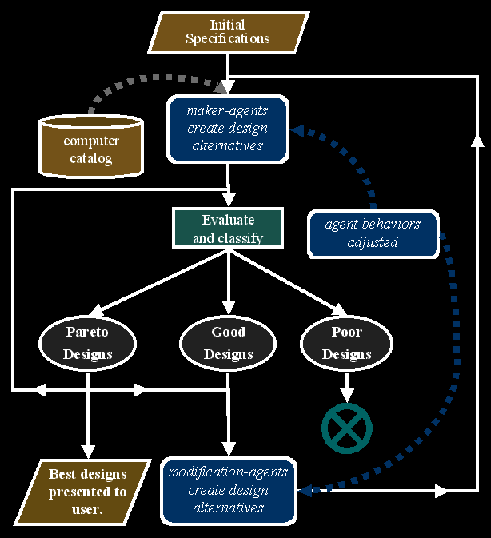| |
|
A-DESIGN - AGENT BASED ADAPTIVE CONCEPTUAL DESIGN
INTRODUCTION | ITERATIVE SEARCH PROCESS | MULTIOBJECT DESIGN SELECTION | MULTI AGENT ARCHITECTURE | FUNCTIONAL REPRESENTATION | A DESIGN AS SEARCH STRATEGY | TEST RESULTS | DISCUSSION AND CONCLUDING REMARKS
ITERATIVE SEARCH PROCESS

Figure 1 shows a flowchart of the overall process. Initially, the system accepts a starting point or description of the problem to be solved. One class of agents, known as maker-agents, works directly with these input specifications to produce a population of design alternatives. These design states are then evaluated on the various objectives specified by the user. The design sorting method is capable of retaining flexibility in the design process and allowing for robust selection of designs regardless of the number of objectives. The strategy divides the designs into three populations -- pareto optimal, good, and poor -- via the design selection process described in the following section. As seen in the figure, the pareto optimal designs are copied to the next iteration as well as sent with the good designs to modification-agents. This modification phase of the process involves agents that attempt to improve the solutions and effectively refine the current set of best designs. Poor designs are discarded since they have the least potential to improve future designs and to make room for additional modified or new designs in future iterations. Throughout the process manager-agents provide design sorting criteria, feedback to agents, and convergence criteria for the process. As the process unfolds, design states cycle through the exchange between maker-agents and modification-agents until the system converges or resource and time constraints require the acceptance of the current best design.
|
|

